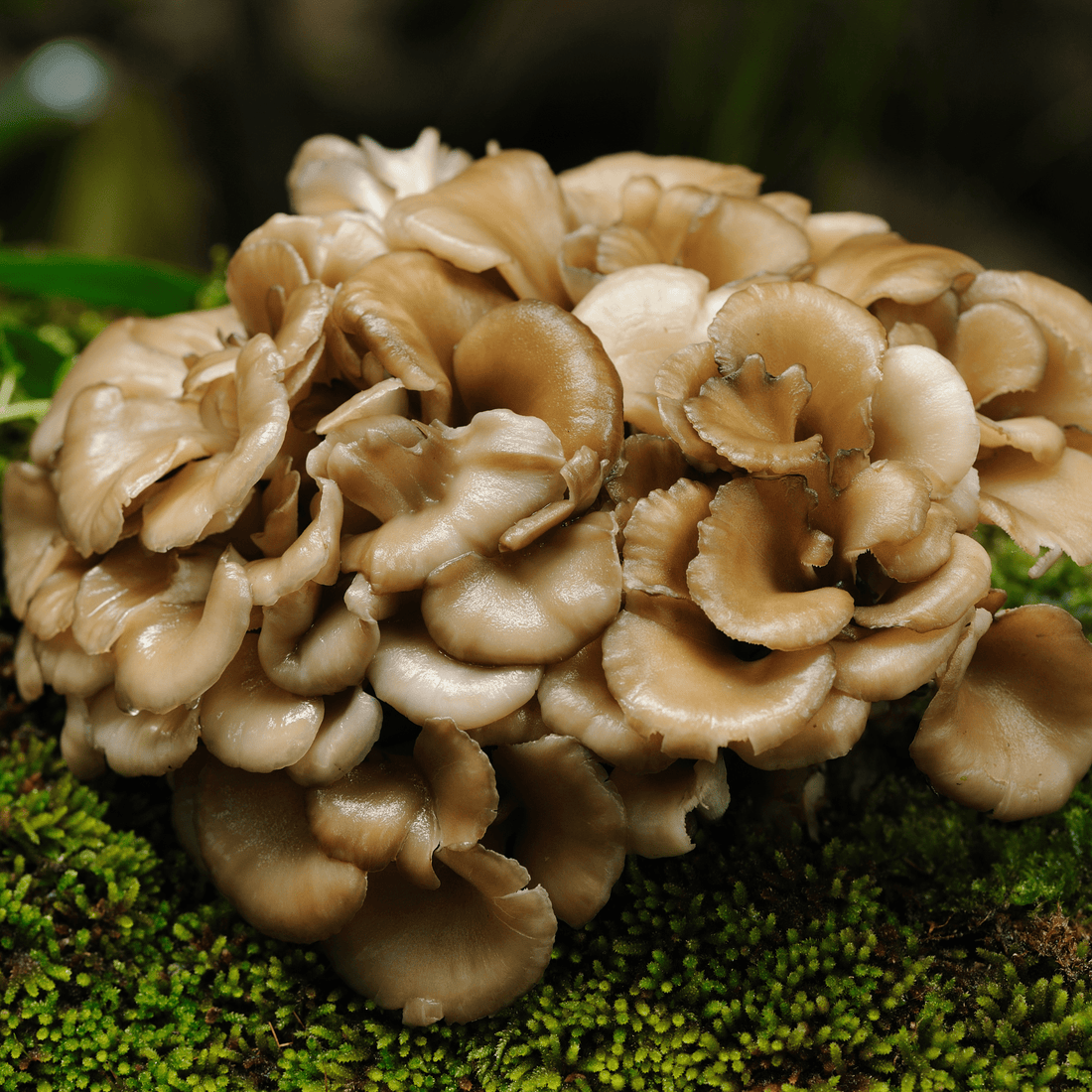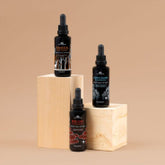
Fruiting Bodies vs. Mycelium: What to Look for in Mushroom Supplements
Many mushroom products on the market today claim to provide health benefits like immune system support and improved energy. From turkey tail to chaga, cordyceps, and lion’s mane mushrooms, there are countless functional mushroom supplements to choose from.
So do these products actually work? Well, yes and no. Scientific research has confirmed many promising benefits from functional mushrooms, yet several sold products do not contain the active compounds that back these claims. When shopping for mushroom supplements, remember that not all of them are made equal.
What are the fruiting bodies of mushrooms?
The fruiting body of fungi is the actual mushroom that we see above ground. They come in many shapes and sizes depending on the mushroom species, but their primary function is to produce spores. Of course, mushrooms are only a small part of the entire fungal organism, yet they are responsible for the fungi’s reproductive structure. Since the fruiting body is exposed to external elements such as light, temperature, and nutrients, its composition is entirely different than the mycelium that branches below it.
What is mycelium?

Mushroom life cycle
Mycelium is the unseen part of the fungi that branches underground into substrate or wood. It is composed of tiny thread-like structures of mycelial cells called hyphae, similar to a plant’s roots. They stretch out into networks to absorb water and nutrients for the entire fungus. Although mushroom mycelia are tiny and unseen, they make up most of the fungal organism and can stretch out for miles.
In the mushroom life cycle, mushrooms start as spores, then colonize the ground and create mycelia. Once the mycelium network is established, the fungus makes the fruiting bodies of mushrooms when they are ready to reproduce for the cycle to begin again. Each part of the fungi serves a different purpose in the organism and is made of separate compounds. Therefore, their health benefits will vary depending on what part of the fungi is consumed.
The power of the whole mushroom
There is a discourse in the supplement community on whether or not mushroom extracts are most effective when composed of mycelium versus fruiting bodies. Several mushroom powders and tinctures on the market make claims of health benefits, but which ones are truly effective?
Beware of false marketing
Be warned – many products claim to provide the full benefits of their functional mushroom extracts. On the contrary, these claims tend to be marketing, as the supplements do not contain much nutritional value.
Take the case of the Reishi mushroom (Ganoderma lucidum) supplements in a 2017 study where they found that only five out of nineteen samples contained relevant amounts of the beneficial compounds called polysaccharides and triterpenes. A large majority of the samples in the study were mycelium based (1).
Mycelium-based supplements are the go-to route for many brands because of their cheaper and easier production methods. Many products do not use pure mushroom mycelium in their supplements. Instead, the mycelium is grown on a grain substrate like corn or rye. The myceliated grain is then ground up and sold as a mycelium extract despite being primarily composed of fillers.
Growing mushrooms or harvesting them is significantly more laborious and time-consuming than adding the spores to a grain substrate and waiting only for the first stage of a fungi’s growth. Since these products are not made entirely of pure mycelium, they lose their value as functional mushroom supplements.
On the other hand, fruiting body extracts can cut corners in production and lose nutritional content in the process. Some mushroom powders use fillers that dilute the amount of fruiting body powder actually available while cutting the nutritive quality of the supplement.
Additionally, many compounds in mushrooms are not water soluble, though several mushroom tinctures sell medicinal mushrooms that have only been extracted through hot water. In contrast, high-quality tinctures process the medicinal mushrooms through dual extraction, which processes the mushrooms through both hot water and alcohol extraction.
The alcohol extraction allows the remainder of the compounds to be absorbed into the tincture solution, but the extraction process can take several weeks.
Fruiting bodies and mycelium as medicine
Mushroom fruiting bodies and pure mycelium have different medical applications because of their distinct qualities. Both share similar amounts of complete amino acid proteins; however, they have varied nutritional values and functions due to the different gene expressions and external conditions that occur during fruiting formation.
Mycelium typically generates higher amounts of vitamin D2. It has a slightly higher concentration of a compound called lovastatin, which is used as a medication to treat high cholesterol and reduce the risk of cardiovascular diseases.
On the other hand, fruiting bodies are significantly higher in antioxidants to protect cells from damage and free radicals. Additionally, they have higher concentrations of polysaccharides like beta-glucans, which are backed by clinical studies to improve focus and mood, boost immune function, reduce inflammation, and support gut health (2).
Though both mycelium and fruiting bodies of fungi have beneficial compounds, fruiting bodies have significantly larger quantities of the bioactive compounds linked to health-improving benefits.
Be informed about the supplements you choose
The U.S. Food and Drug Administration (FDA) orders mushroom supplement manufacturers to indicate whether the supplement is made from mycelium or fruiting bodies, stating that “Labeling should not suggest or imply that the food contains mushrooms.” Unfortunately, supplements use marketing with false claims to lure in buyers. Here are some things you should look out for when searching for a high-quality mushroom supplement:
● Confirm that the product is made from 100% fruiting bodies.
Some supplements will label themselves “full-spectrum,” meaning they contain a combination of mycelium and fruiting bodies. There’s no way to know the ratio of the mix, though, as the product could be made primarily of grain with a small percentage of actual mushrooms. Read the ingredients to make sure the product is clear about its components.
● Ensure the product is Certified Organic.
Mushrooms are incredibly porous and can absorb contaminants and pesticides. Organic supplements ensure the highest quality mushrooms are used in the product.
● Examine the color of the product.
Mushroom powders and blends tend to be dark in color. Lighter powders may indicate a product that uses grain fillers.
● Smell and taste the product.
If the product has a starchy, grainy smell or taste like cereal or oatmeal, it’s likely to contain fillers. Legitimate supplements can smell earthy, musty, and even like chocolate depending on the species of mushrooms used.
● Look for brands that sell dual extraction tinctures.
Tinctures that go through the dual extraction process contain more beneficial compounds than those that only process through hot water. This extended process allows all of the compounds to be absorbed in the tincture, making it significantly more effective.
References
1.) Wu, Ding-Tao, Yong Deng, Ling-Xiao Chen, Jing Zhao, Anton Bzhelyansky, and Shao-Ping Li. 2017. “Evaluation on Quality Consistency of Ganoderma Lucidum Dietary Supplements Collected in the United States.” Scientific Reports 7 (August): 7792. https://doi.org/10.1038/s41598-017-06336-3.
2.) Berger, Ralf G., Sven Bordewick, Nina-Katharina Krahe, and Franziska Ersoy. 2022. “Mycelium vs. Fruiting Bodies of Edible Fungi—a Comparison of Metabolites.” Microorganisms 10 (7): 1379. https://doi.org/10.3390/microorganisms10071379.


